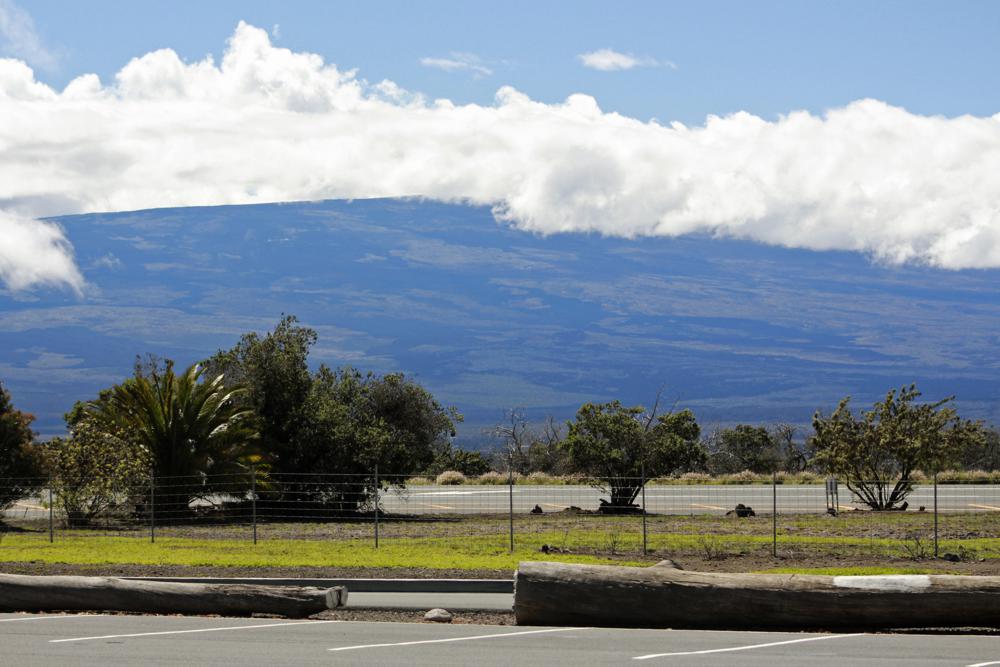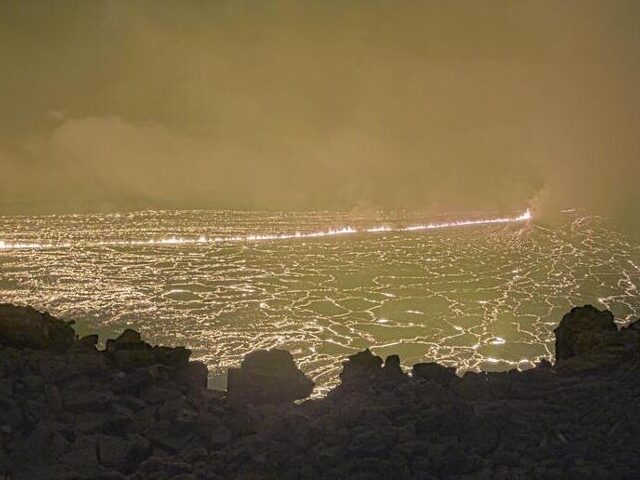HONOLULU (AP) — Hawaii’s Mauna Loa, the world’s largest active volcano, has started to erupt for the first time in nearly four decades, prompting volcanic ash and debris to fall nearby, authorities said Monday.
The eruption began late Sunday night in the summit caldera of the volcano on the Big Island, the U.S. Geological Survey said. Early Monday, it said lava flows were contained within the summit area and weren’t threatening nearby communities.
“However, lava flows in the summit region are visible from Kona. There is currently no indication of any migration of the eruption into a rift zone,” the Hawaiian Volcano Observatory said in a statement. A rift zone is where the mountain is splitting apart, the rock is cracked and relatively weak and it’s easier for magma to emerge.
How long the volcano erupts and whether it could cause lava to flow to populated areas of the island is impossible to predict, said Miel Corbett, a USGS spokesperson.

Mauna Loa is seen from the Gilbert Kahele Recreation Area off Saddle Road on the Big Island of Hawaii on Oct. 27, 2022. (AP Photo/Megan Moseley)
“But I can tell you, we’re in constant communication right now with Hawaii Civil Defense, and they’re providing updates to community members,” she said.
The USGS warned residents at risk from Mauna Loa lava flows should review their eruption preparations. Scientists had been on alert because of a recent spike in earthquakes at the summit of the volcano, which last erupted in 1984.
Portions of the Big Island were under an ashfall advisory issued by the National Weather Service in Honolulu, which said up to a quarter-inch (0.6 centimeters) of ash could accumulate in some areas.
Mauna Loa is one of five volcanoes that together make up the Big Island of Hawaii, which is the southernmost island in the Hawaiian archipelago.

File/Circa 1930: Tourists peer into the mouth of Halemaumau, which means ‘House of Everlasting Fire’, the inner crater of Kilauea. Situated on the slopes of Mauna Loa on central Hawaii Island, Kilauea is the most active volcano in the world. (General Photographic Agency/Getty Images)
Mauna Loa, rising 13,679 feet (4,169 meters) above sea level, is the much larger neighbor to Kilauea volcano, which erupted in a residential neighborhood and destroyed 700 homes in 2018. Some of its slopes are much steeper than Kilauea’s so when it erupts, its lava can flow much faster.
During a 1950 eruption, the mountain’s lava traveled 15 miles (24 kilometers) to the ocean in less than three hours.

COMMENTS
Please let us know if you're having issues with commenting.